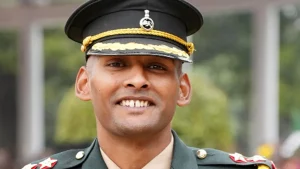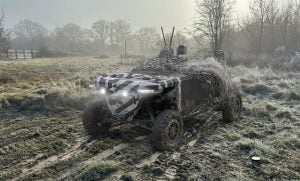The 22nd Anniversary of Kargil Vijay Diwas is being celebrated across the country today. The Nation is remembering its war heroes and paying tributes to Martyrs on Kargil Vijay Diwas. The day marks the victory of Indian armed forces in Operation Vijay in 1999 when they evicted the infiltrators backed by the Pakistani army from high outposts in the Kargil sector.
President Ram Nath Kovind will visit Kargil War Memorial at Drass in Ladakh today and pay homage to the indomitable courage and sacrifice of the Indian Armed Forces during the Kargil Conflict in 1999. President of India and Supreme Commander of the Indian Armed Forces Ram Nath Kovind will be participating in the 22nd Anniversary of Kargil Vijay Diwas. He will be the first President to visit Kargil War Memorial at Drass and participate in the Kargil Vijay Diwas celebrations. Vice President M. Venkaiah Naidu today saluted the heroes of the Kargil War and paid homage to the martyrs for their supreme sacrifice. In a tweet, Mr Naidu said, he joined the nation in remembering the Indian armed forces’ saga of valour and gallantry. He said the nation will remain forever grateful to them and their families.
On the occasion of Kargil Vijay Diwas, Prime Minister Narendra Modi today paid homage to all those who lost their lives in Kargil protecting our nation. In a tweet, Mr Modi said, their bravery motivates people every single day. Prime Minister also shared an excerpt from last year’s Mann Ki Baat Programme on All India Radio. He said India can never forget the circumstances under which this Kargil war was fought. Defence Minister Rajnath Singh today bowed to the indomitable valour and sacrifice of the Indian Army, on the occasion of Kargil Vijay Diwas. In his video message, Mr Singh said, the victory achieved by the Indian Army in Kargil, in spite of difficult and unfavourable conditions is incomparable.
Chief of Defence Staff Gen Bipin Rawat will also pay homage to the Kargil martyrs today at Drass while Defence Minister Rajnath Singh will pay tributes to the fallen soldiers who fought valiantly during Kargil War at National War Memorial in New Delhi this morning.
In a tweet, the Indian Army said, Kargil Vijay Diwas epitomizes the Saga of Valour of our soldiers during the Kargil War. The gallant soldiers of the Indian Army triumphed over Pakistani invaders with undaunted courage and determination.
India is also celebrating the Golden Victory of Bangladesh Liberation this year. As part of the nationwide commemoration of the Golden Victory to Indian Armed Forces in the 1971 war, a Victory Flame will be received at War Memorial in Drass around Nine in the morning followed by Kargil Vijay Diwas celebrations.
Yesterday in the evening, while releasing Shersha movie trailer based on Kargil war hero, Param Veer Chakra Captain Vikram Batra, Chief of Defence Staff General Bipin Rawat appealed to filmmakers to make more such inspiring films. An emotional atmosphere filled at Drass War Memorial, when dear ones were lighting the candles in memory of martyrs who made supreme sacrifice defending country sovereignty.
Here are some important facts to know about the 1971 Indo-Pak War:
1. The conflict was sparked by the Liberation War of Bangladesh following West Pakistan’s ill-treatment of the people and undermining the election results in East Pakistan. The call for secession was officially raised on March 26, 1971, by East Pakistan. India’s then Prime Minister expressed full support for their independence struggle on the very next day.
2. The media had reported widespread genocide against Bengalis, mainly Hindus, at the hands of the Pakistani military, which forced about 10 million people to migrate to neighbouring India. India opened its borders for the Bengali refugees.
3. The Indo-Pak war effectively began after preemptive aerial strikes by Pakistan Air Force (PAF) across airfields in north-western India, including Agra as part of its Operation Chengiz Khan. The Taj Mahal, which glowed in the moonlight, was camouflaged using twigs and leaves to hide it from the enemy aircraft.
4. In response, the Indian Air Force flew about 4000 sorties in the western front and close to two thousand in the east. PAF could offer little in retaliation with around 2800 and 30 sorties on the two fronts. IAF continued to raid forward air bases in Pakistan till the end of the war.
5. The Indian Navy’s Western Naval Command successfully conducted a surprise attack on Karachi port under the codename Trident on the night of December 4-5.
6. Pakistan had also mobilized its troops along the western front. The Indian Army retaliated and captured several thousand kilometers of Pakistani territory.
7. Pakistan suffered the maximum casualty with about 8000 dead and 25,000 wounded, while India lost 3000 soldiers and 12,000 were wounded.
8. The Mukti Bahini guerrillas in East Pakistan joined hands with the Indian forces to fight against Pakistani troops in the east. They received weapons and training from the Indian Army.
9. The Soviet Union sided with the East Pakistanis in their liberation movement and India in the war. On the other hand, the United States, under the presidency of Richard Nixon, supported Pakistan economically and materially. The US went as far deploying an aircraft in the Bay of Bengal as a show of support towards the end of the war.
10. At the end of the war, around 93,000 Pakistani troops led by General Amir Abdullah Khan Niazi surrendered to the allied forces. They were returned as part of the Shimla Agreement of 1972.
11. Pakistan was stripped of more than half of its population, as Bangladesh was more populous than West Pakistan. Nearly one-third of its army was captured. India’s military dominance was telling though it maintained restraint in its reaction to the victory.
ALSO READ: All Wars Fought By India After Independence
For Kargil Heros, For All BraveHearts.
— SSBCrackExams (@SSBCrackExams) July 26, 2021
“26 July” #KargilVijayDiwas epitomises the Saga of Valour of our soldiers during Kargil War. The gallant soldiers of Indian Army triumphed over Pakistani Invaders with undaunted courage & determination. pic.twitter.com/8myIVD3ATM





















